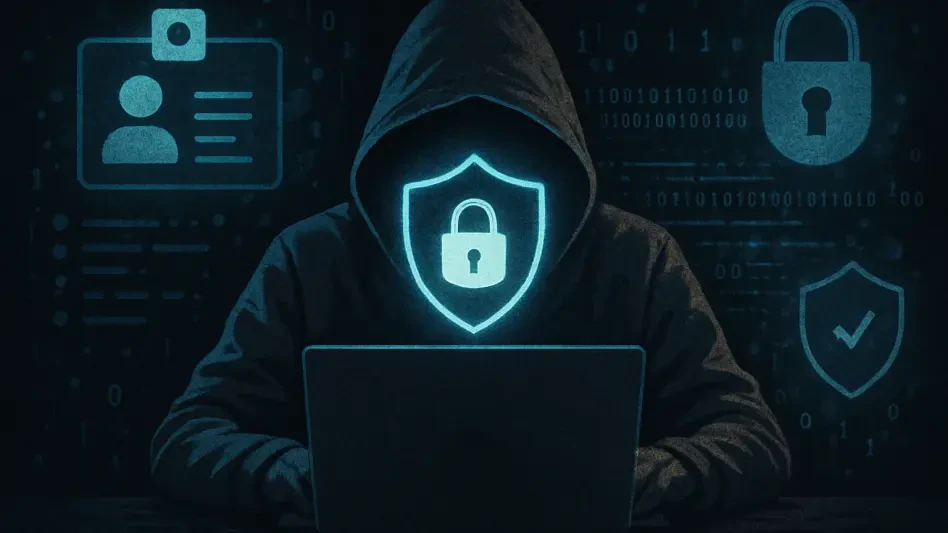In an era where digital footprints are as common as physical ones, the risk of personal information being exposed on the dark web has become a pressing concern for millions of individuals worldwide, highlighting the urgent need for protective measures. The dark web, a hidden part of the internet accessible only through specialized software, is often a marketplace for stolen data, including Social Security numbers, credit card details, and login credentials. Reports indicate that billions of personal records have been compromised in data breaches over recent years, with much of this information ending up for sale in shadowy online forums. This alarming trend underscores the urgent need for proactive measures to safeguard sensitive data. As cybercriminals grow more sophisticated, understanding the mechanisms of dark web threats and implementing robust protective strategies are essential steps to securing one’s identity against unauthorized access and exploitation.
1. Understanding the Dark Web and Its Risks
The dark web operates as a concealed layer of the internet, often associated with illegal activities, including the trade of stolen personal information. Unlike the surface web, which is indexed by standard search engines, this hidden network requires specific tools like Tor to access, providing anonymity to both buyers and sellers of illicit goods. For individuals, the primary risk lies in having their data—such as passwords, financial details, or even medical records—sold to the highest bidder. Once exposed, this information can be used for identity theft, fraudulent transactions, or phishing schemes. The scale of this issue is staggering, with countless records circulating in dark web markets, often unbeknownst to the victims until significant damage has already occurred. Awareness of how data ends up in these environments, frequently through breaches or malware, is the first critical step toward mitigating potential harm and taking control of digital security.
Another dimension of dark web risks involves the speed at which stolen data spreads across these networks, often outpacing victims’ ability to respond. Cybercriminals employ advanced techniques to harvest information, from exploiting weak passwords to deploying ransomware that locks users out of their own systems until payment is made. Once data is leaked, it can be bundled and sold in bulk, making it accessible to multiple malicious actors. This creates a ripple effect, where a single breach can lead to years of financial and emotional distress for those affected. Additionally, the anonymity of dark web transactions makes it challenging for law enforcement to track perpetrators, leaving individuals largely responsible for their own defense. Recognizing the persistent and evolving nature of these threats highlights the importance of staying informed about cybersecurity trends and adopting a proactive stance against potential vulnerabilities.
2. Monitoring for Suspicious Activity
One effective strategy to combat dark web threats is continuous monitoring of personal information for any signs of exposure. Specialized services can scan hidden marketplaces and forums for mentions of specific data, such as email addresses or credit card numbers, alerting users if their information appears in suspicious contexts. These tools often provide real-time notifications, allowing individuals to act swiftly before significant damage occurs. For instance, if a compromised password is detected, immediate steps like changing credentials across all accounts can prevent unauthorized access. Many of these services also offer insights into the type of data exposed, helping users understand the severity of the breach. Integrating such monitoring into a broader security plan ensures that potential threats are identified early, minimizing the window of opportunity for cybercriminals to exploit stolen information.
Beyond automated monitoring tools, individuals can take manual steps to keep tabs on their digital presence and detect anomalies. Regularly reviewing bank statements and credit reports for unauthorized transactions or unfamiliar accounts is a practical way to spot identity theft in its early stages. Setting up alerts with financial institutions for large transactions or changes to account details adds an extra layer of protection. Additionally, paying attention to unusual login attempts or phishing emails that mimic legitimate organizations can prevent falling victim to scams designed to harvest more data. The key lies in maintaining vigilance over personal and financial accounts, as even small discrepancies can signal larger issues tied to dark web activity. Combining these manual checks with automated solutions creates a comprehensive defense mechanism, ensuring that no potential threat goes unnoticed in the vast digital landscape.
3. Strengthening Digital Defenses
Building a robust digital security framework is crucial to preventing data from reaching the dark web in the first place. Strong, unique passwords for each account serve as the first line of defense, significantly reducing the risk of unauthorized access during a breach. Utilizing a reputable password manager can help generate and store complex passwords, eliminating the temptation to reuse them across platforms. Enabling two-factor authentication (2FA) wherever possible adds another barrier, requiring a secondary verification method like a code sent to a mobile device. These measures collectively make it harder for cybercriminals to penetrate accounts, even if initial credentials are compromised. Staying updated on software patches and security updates for devices and applications also closes potential entry points that hackers might exploit, reinforcing overall protection.
Equally important is the practice of limiting the amount of personal information shared online to reduce exposure risks. Oversharing on social media or public platforms can provide cybercriminals with valuable details used to craft targeted attacks or guess security questions. Encrypting sensitive communications and using secure, private networks—especially when accessing public Wi-Fi—further shields data from interception. Educating oneself about phishing tactics and avoiding suspicious links or downloads prevents malware from infiltrating systems and stealing information. Regularly backing up important data to secure, offline locations ensures that even in the event of a ransomware attack, critical files remain accessible without paying a ransom. By adopting these layered security practices, the likelihood of personal information falling into the wrong hands diminishes, offering greater peace of mind in an increasingly connected world.
4. Steps to Take After a Breach
If personal data is suspected to have been exposed on the dark web, immediate action can mitigate the fallout and prevent further damage. Start by changing passwords for all affected accounts, ensuring each new one is strong and unique to avoid repeat compromises. Contacting financial institutions to freeze or monitor accounts for fraudulent activity is a critical next step, as is placing a fraud alert on credit reports through major bureaus to prevent new accounts from being opened in the victim’s name. Reporting the incident to relevant authorities, such as local law enforcement or cybercrime units, can aid in tracking broader criminal activity. Additionally, consider enrolling in identity theft protection services that offer recovery assistance, guiding individuals through the complex process of restoring their digital and financial security after a breach has occurred.
Another vital aspect of post-breach recovery involves assessing how the exposure happened to prevent future incidents. Conducting a thorough review of account security settings and identifying potential weak points, such as outdated software or reused passwords, helps address vulnerabilities. Reaching out to any organizations or platforms that may have been breached to understand the scope of the incident provides clarity on what data was compromised. Documenting all actions taken, including communications with banks or credit agencies, creates a record that may be useful for legal or insurance purposes. Taking time to educate oneself on emerging threats and scams ensures better preparedness moving forward. By responding decisively and learning from the experience, individuals can rebuild their digital defenses and reduce the risk of falling victim to similar threats in the future.
Final Safeguards for a Secure Future
Reflecting on past efforts to combat dark web threats, it becomes evident that a combination of vigilance and technology plays a pivotal role in safeguarding identities. Many individuals who adopted monitoring tools and strengthened their digital habits found themselves better equipped to handle potential breaches. Moving forward, staying proactive by regularly updating security measures and exploring advanced protection services proves to be a wise strategy. Embracing a mindset of continuous learning about cybersecurity trends ensures that defenses remain robust against evolving tactics. By taking these actionable steps, the foundation for a safer digital presence is laid, offering reassurance that personal information can be protected even in the face of persistent underground threats.








